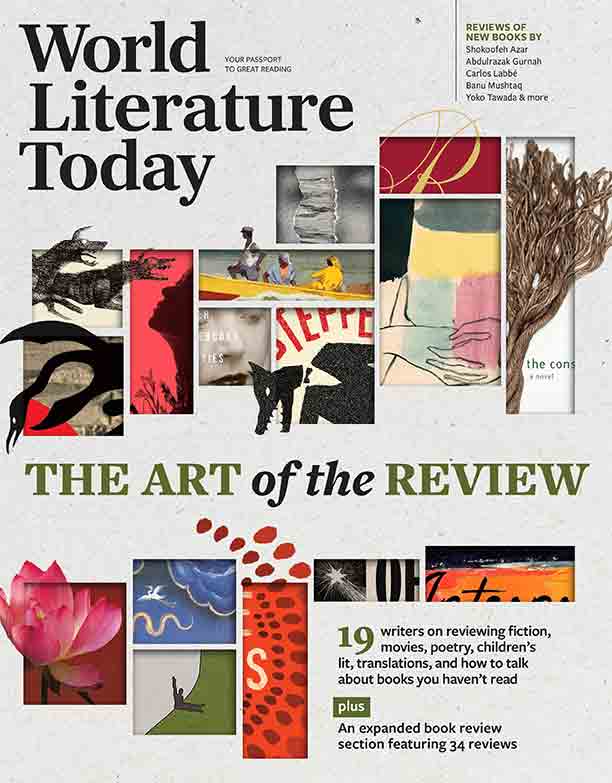Do Book Reviews Sell Books?

The owner of a small, independent press considers the role of book reviews in getting books into readers’ hands.
In March, Publishers Weekly—one of the oldest and most important trade publishing industry publications—dropped a bomb on publishers: publishers would now be charged a $25 submission fee when submitting books for review. The submission fee will not guarantee that Publishers Weekly will review a book, but it’s now a requirement for the magazine to even consider reviewing a book.
The fee immediately sparked an intense and thought-provoking conversation among small, independent publishers. Some publishers threw up their hands and said, “We can’t afford this, so we’ll no longer be submitting to Publishers Weekly.” Some said that Publishers Weekly had never reviewed any of their titles before, so there was absolutely no point in paying the submission fee. Some said they would figure it out on a case-by-case basis.
As the owner of a small, independent, for-profit press, I immediately went into lockdown mode on PW submissions, even though one author told me that she’d gladly pay the fee. It isn’t that I think it’s egregious of PW to charge a submission fee. A print publication like PW has enormous overhead, and as a business, they need to find ways to generate sufficient revenue to keep going. But the received wisdom among publishers, despite PW’s public denials, is that PW, like many trade magazines, privileges books by publishers that are able to pay for advertising.
I already play that game, paying for advertising as much as I can. Aside from advertising, for my company, the ratio of submitted books to books reviewed by Publishers Weekly averages about one review for every ten to twelve books submitted. Doing the math, that means with the submission fee, I’ll be paying approximately $250 to $300 or more per review—plus still paying for advertising in order to grease the wheels. At some point, I’ll bite the bullet, but added submission fees requires re-finessing and reimagining the budget for the entire company.
PW’s new submission fee indicates that publishing as an industry is always changing, including how review publications view their contribution to book sales. The assumption on their part is that trade reviews are a necessary component to any marketing and publicity campaign; a submission fee is thus a small price to pay. But the stark and compelling question that emerged during this entire discussion among independent presses was whether book reviews even sell books. It would be one thing if a tiny submission fee guaranteed a review of a book, but why pay a submission fee for a potential review if book reviews don’t influence sales?
PW’s new submission fee indicates that publishing as an industry is always changing, including how review publications view their contribution to book sales.
Opinions on this topic were heavily divided.
Over at Feral House, which has published 225 books since they launched in 1989, Christina Ward says they have a difficult time securing trade reviews. Publishers Weekly has not reviewed a single book they’ve published since 2014. From her perspective, reviews have almost no effect on sales.
“We’re outsiders,” she says. “Our topics, our MO, and how we approach sales.” Ward expends approximately 20 percent of her publicity time and energy on reviews and pours 80 percent of publicity efforts into securing features and author interviews—radio, podcast, and print. “When I get national NPR or Coast-to-Coast AM interviews . . . we see a direct twenty-four- to forty-eight-hour sales spike,” she says. Since Feral can’t rely on trade reviews, they instead have a robust newsletter, offering loyal readers of the “Feral House” original content and interviews that don’t appear anywhere else. She also markets directly to libraries and bookstores. “I know who our bookstores are.”
Editor Luke Hankins at Orison Books argues that reviews can sell books and suggests that the reason many small presses don’t often get prominent reviews is that they haven’t done sufficient homework to get their titles in front of the right people, or don’t send review copies in sufficient time for an outlet to review it. “To give an example from a very small press publishing six or seven books a year, Orison’s titles have been reviewed or featured (often multiple times) in the New York Times Book Review, Chicago Tribune, Boston Globe, Publishers Weekly, Booklist, Foreword Reviews, Poets & Writers, the Washington Post ‘Book Club’ newsletter, Literary Hub, The Millions, and many other national venues because we put the effort and planning into sending galleys out far enough in advance of publication. And yes, reviews—especially multiple reviews in the same time period—can sell books.”
In particular, Hankins argues, “reviews in trade publications can significantly increase library acquisitions, which are highly desirable for a number of reasons, including that books become available to low-income populations who might otherwise have no access and that library book orders are rarely, if ever, returned, unlike retail orders.”
Alternatively, Andrew Gifford, director of the Santa Fe Writers Project, finds that among trade reviews, only Library Journal moves the needle—probably because, as Hankins mentioned above, it helps with library sales. Because bookstore sales are so unreliable for their press, SFWP has abandoned efforts to get reviews at Kirkus and Publishers Weekly and focuses its attention on getting author guest essays, listicles, interviews, and the like at more popular literary magazines like LitHub, Electric Literature, and The Rumpus. These are likely to lead to consumer sales. Like library sales, direct consumer sales through online retail sites like Amazon, Bookshop.org, or on publishers’ websites are unlikely to be returned.
Here we find a big divide between the received wisdom of traditionally distributed publishers (both the independents and the corporate New York publishers) and self-published authors or small presses that, for whatever reason, have been kept out of mainstream publishing via distribution. Most traditional publishers, both for- and nonprofits, have focused their publicity efforts on reaching the “trade”: booksellers, librarians, and educators. To do that, you do need reviews in trade publications. It makes a difference when sales reps are trying to convince booksellers and librarians to place orders for your books. Likewise, awards committees pay attention to reviews, and some awards are pivotal for a book’s success in the trade industry, particularly in the library market.
Most readers, on the other hand, do not care what Kirkus or Booklist says about a book. Unless they happen to be a writer, they may not even know who or what Kirkus is. They may or may not care if a book has won an award. However, they do want to know whether other readers like it.
Matvei Yankelevich, editor in chief of World Poetry Books, says their data reflects that reviews, particularly in academic journals, do sell books—in part because they are able to turn around and mention reviews on social media, which influences those desirable consumer sales. The publicist for my company, Lora Herrera, pointed out that as a reader browsing physical copies in bookstores, a good cutline from a trade review or a blurb from an author she had heard of could help entice her to buy a book she was “on the shelf about.” Now, as a mostly digital book buyer due to living abroad, she finds books to buy from online lists and “postpub” reviews (i.e., consumer reviews or reviews in consumer-oriented publications like Ms. magazine). Even though she religiously sends all of Catalyst Press’s titles to all the trades for reviews, she believes that such reviews (other than a New York Times review, which would reach both consumers and professional readers) attract librarians and booksellers and show them there’s a buzz around the book, but they fail to reach the general book-buying public. The professional reviews she now has access to, such as in-depth reviews in Foreword, do make her want to buy the books she reads about, but she would never see these reviews if she didn’t work in the publishing industry.
Thus we enter the realm of consumer-focused publicity: How important are reviews by influencers and readers? What influence do reviews on TikTok, YouTube, Goodreads, and Amazon have on sales? These are the types of reviews that self-published authors, often barred from trade reviews unless they pay a premium price for them, seek. Increasingly, independent publishers are also spending more time and attention to obtaining consumer and influencer reviews, finding that they make a big difference in sales, according to Lisa Zammit, managing editor of IHRAM Press, the publishing imprint of the International Human Rights Art Movement.
Thus we enter the realm of consumer-focused publicity: How important are reviews by influencers and readers?
Beyond influencer reviews, outreach to consumers on social media can be much more direct, with a much bigger impact than publishers expect. In May 2025 Modjaji Books, a southern African publisher of women writers, put out a “keep the lights on” call for help on social media and in their newsletter. The press offered a discount to people to buy five books at once. The post turned out to be Modjaji’s most shared social media post ever, and the response was astonishing, including garnering attention from heads of publishing departments at universities in South Africa, invitations to apply for grants, and even established literary icons purchasing books and requesting ongoing subscriptions.
“I guess I don’t see the people I was communicating with as consumers,” Colleen Higgs, Modjaji’s publisher, said. “They are readers and writers and people who don’t want to see a small press like Modjaji die. As a small, independent publisher, the books we publish don’t get noticed by the public, because we don’t get space on shelves upfront with the cover out at bookstores, and it’s hard to get reviews. I was kind of desperate because things have been so tough this past year. It’s like that Bible verse—you have to knock or the doors won’t be opened to you. Sometimes people don’t know what is out there, and this was a way of drawing their attention to it. Sometimes it’s hard to know which door to knock on or what kind of knocking you need to do, or what the person wants when they open the door. It’s not as simple as it sounds, but for some reason, this campaign really seems to have worked. It’s a huge relief.”
Ultimately, trade book reviews are not a panacea for publicity. Data on how influential reviews are for a book’s sales is hard to obtain, but without question, they are part of a whole package. Reviews can provide credibility for a book, and their use on social media, websites, and as part of a book’s metadata helps create a feedback loop that increases their visibility. But just as important as reviews, or awards, are an author’s and publisher’s efforts in person and online, interviews in print and other media, guest essays and posts, awards, consumer and influencer reviews, and any other factor that can gain a book visibility among both trade professionals and consumers.
El Paso, Texas















